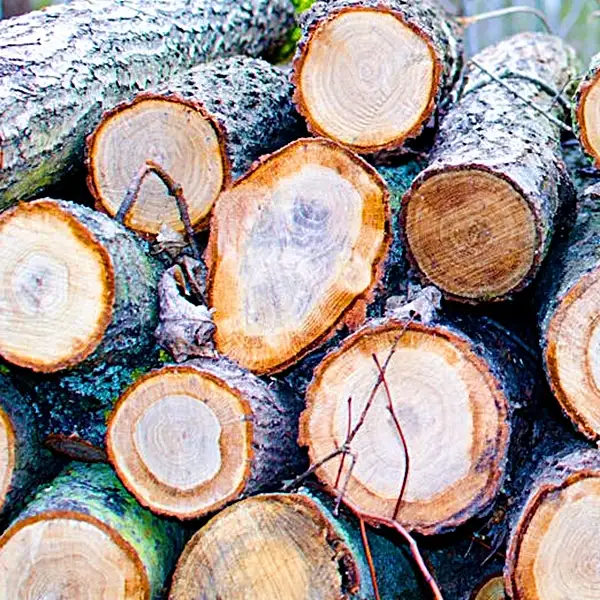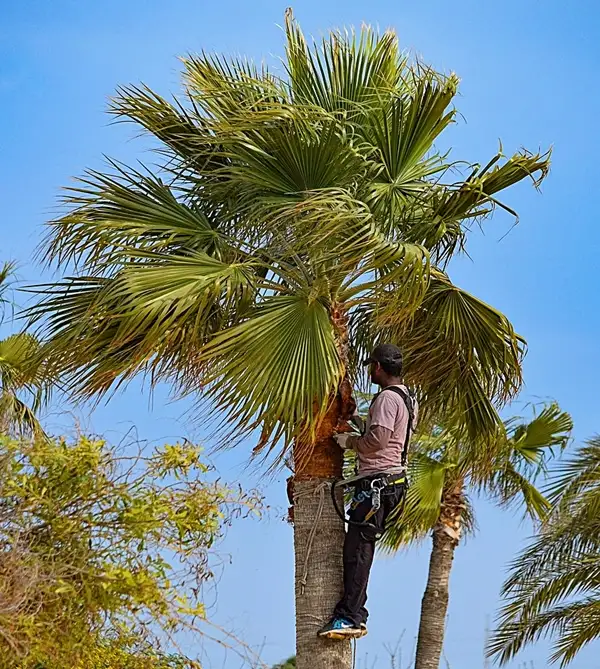Key Takeaways
| Key Takeaways | Why It Matters |
|---|---|
| A surprising root structure unlike other trees | Challenges traditional perceptions of tree growth |
| Do palm trees have deep roots? REALLY? | Debunks a widely believed myth with scientific clarity |
| The true depth and spread of palm roots | Reveals fascinating facts about how palms anchor themselves |
| Factors that influence palm root development | Explains the key environmental and genetic determinants |
| How palms remain stable despite shallow roots | Unveils nature’s engineering behind their hurricane resistance |
| Essential tips for ensuring healthy palm growth | Offers expert advice on irrigation, planting, and maintenance |
Unique Root System of Palm Trees
Palm trees are renowned for their towering height & exotic aesthetic appeal. They boast an intriguing contrast between above-ground growth & below-ground development.
Unlike deciduous trees that generate a deep root system with a thick central taproot, palms take a completely different approach. They flaunt an adventitious root system hailing from the stem tissue rather than the root zone – one of the amazing survival adaptations of these tropical beauties.

The palm tree’s unique root structure makes it stand out in its botanical family.
- While many perennial plants possess one primary root called a taproot that penetrates far into ground to search for nutrients & water, palm roots remain close to surface. This unconventional set-up enables palms to find ample sustenance in nutrient-poor soils often prevalent in tropics & coastal regions where they typically thrive.
- Palm tree roots do not enlarge as they grow. Instead, each cell remains similar in diameter from inception till death, making it ‘non-woody’.
- Palm trees have hundreds or even thousands of tiny root fibers that form a dense mat, allowing them to absorb moisture better than most plants. Whether in rich riverbed soil or on salty, worn-out beaches, this strong root system helps them survive and thrive in many different environments.
- Palm tree roots do not grow deep but spread wide (horizontally) across topsoil gathering plenty of nutrients without digging far down.
That is why, when you walk near mature palms, you will see thick clusters of roots just beneath surface – layer after layer running right under your feet!
Debunking 4 Myths: Do Palm Trees Have Deep Roots?

❌ Myth #1: There is a common myth that:
‘Palm trees have deep & penetrating roots that mirror their towering heights. They dig as far down as they grow up toward sky.’
However, despite their impressive vertical growth, these trees do not follow this so-called ‘general rule.’ Instead, they present a surprising contrast in their growth patterns.
The Truth About Palm Tree Roots
✅ Reality: Palm tree roots are vastly different from those of broad-leaved trees. Most trees spread their roots outward, creating an area about three times larger than their crown. Each root thickens as it emerges from base & gradually tapers toward tip.
But palm trees break these conventions. Their roots remain relatively shallow, extending outward rather than deep into soil.
So, while towering palms above clear tropical waters may suggest deep anchoring below, reality tells a different story. Palm roots have evolved over millions of years to access nutrients near surface, eliminating need for deep-reaching roots.
3 More Myths, 3 More Surprises
❌ Myth #2: Taller palms must have deeper roots for stability.
✅ Reality: Strength comes from their flexible trunks & dense root network, not deep anchorage. Even in storms, palms bend with wind rather than break.
❌ Myth #3: Palm trees dig deep into earth to find water.
✅ Reality: Their fibrous root system thrives in topsoil where nutrients & moisture are readily available. They even flourish in sandy & nutrient-poor soils.
❌ Myth #4: Palm roots grow thick & woody over time.
✅ Reality: Palm roots remain the same diameter from start to finish, staying thin & flexible to absorb water efficiently.
Note: These tropical icons do not just defy gravity with their sky-high reach. They challenge everything we assume about how trees take root!
The Real Depth & Spread of Palm Tree Roots
Exploring further into palm tree’s secretive underground life shows that
| Root Characteristic | Description |
|---|---|
| Typical Depth | Approximately 36 inches (3 feet) below the earth’s surface. |
| Lateral Spread | Can extend up to 50 feet across. |
The focus is on maximizing surface explorative capacities instead of penetrating hard compacted grounds like other trees do with rope-like roots structured naturally for harder digs downwards.
3 Factors That Influence Root Development in Palms
The 3 main elements that control how far & wide a palm’s root system spreads are:
| Factor | Influence on Root Development |
|---|---|
| Soil Type |
|
| Sunlight Exposure |
|
| Species and Size |
|
How Shallow Roots Affect Palm Tree Stability?
The dichotomy between towering height & shallow roots naturally elicits questions about stability of these tropical skyline attractions. Indeed, one might wonder how a 100-foot palm manages to withstand strong winds despite having notably shallow root systems.
The answer lies in this table:
| Stability Factor | Description |
|---|---|
| Trunk Structure (Woody Pillar) |
|
| Flexibility |
|
| Adaptation |
‘Palm trees… have very dense wood & are loaded down by fronds. Their shallow root system has adapted so it does not lift easily out of sandy coastal soils.’ |
It showcases nature’s ingenious adaptation patterns for thriving even under adverse environmental conditions.
6 Proper Care Tips for Shallow Root Systems

Given this understanding of Palm tree’s unique root system & its shallow nature coupled with its extensive reach. It is essential that proper care is taken when planting & maintaining them.
Your palms will thank you & extend lovely arching fans waving good-days every morning!
| Best Practice | Importance |
|---|---|
| Planting Depth |
|
| Watering |
|
| Mulching & Runoff Slopes |
|
| Soil Selection |
|
| Pruning |
|
| Sunlight Exposure |
|
Palm Trees: Strength Beyond Depth
Although roots of palm trees do not plunge to great depths, their singular design affords them remarkable resilience across different soil types & climates.
A greater understanding of this system helps us debunk myths about these exotic giants & provides useful insights for their successful growth.
They are a testament to nature’s diversity – mixing shallow anchors with towering aspirations, embodying an effective paradigm: depth may not always be necessary for standing tall!
Frequently Asked Questions
Is it safe to plant a palm tree next to a house?
Yes! Palm roots stay shallow & don’t invade foundations or pipelines. Their lateral spread makes them non-destructive, unlike deep-rooted trees. Just ensure proper spacing to allow fronds room to grow.
What tree has deepest roots?
Shepherd’s tree holds record with roots reaching 230 feet (70 meters) deep. It thrives in arid regions by tapping into underground water sources.
How to dig up a palm tree?
Water the soil, dig a wide trench around base & carefully cut lateral roots. Keep root ball intact for successful transplantation.
Do palm tree roots cause damage?
No! They do not thicken or crack concrete. However, their spread can crowd nearby plants so plan spacing accordingly.








